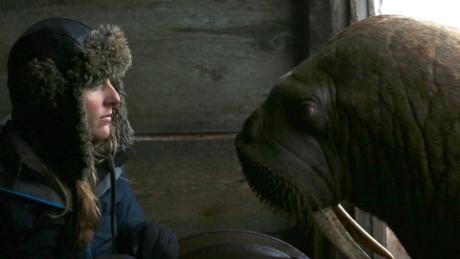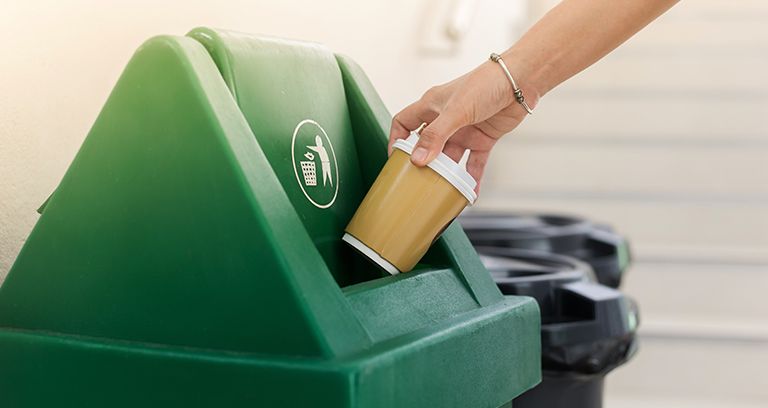In the virtual Green Academy HQ we have been coming up with ideas for the best way to celebrate Earth Day, after all, today is the 50th anniversary! We thought the best way to celebrate especially given that not all of us can go to our favourite places at the moment is to share with everyone else where our favourite places on Earth are. Having time for reflection is really important and showing gratitude for our favourite places is not just good for the planet but good for our brains too!
Before we delve into our favourite places here is a little about Earth Day, it is an annual event which takes place on the 22nd of April to show our support for environmental protection. In fact, back on Earth Day in 2016 was when the Paris Agreement was signed by over 120 different countries entering into force the Climate Protection Treaty! So here at the NTU Green Academy, we think it is definitely a day to celebrate!
Petra is the Head of the NTU Green Academy term, her home country is Germany and for her being in forests is her favourite place on Earth.
“Forests are the best place in the world for me. I love to be in a forest full of moss and green leaves with fresh clean air. As a child and a teenager, I was every day in the forest taking our dog for a walk, sunshine in May with the smell of ‘Waldmeister’ or fog in November imagining little ‘good’ trolls everywhere… I still try to be in the forest as much as I can…..really old trees are my favoured 🙂”

Helen is the Deputy-head in our team, she has shared a very special place to her and her family!

“One of my family’s favourite places on Earth is Isaan province, NorthEast Thailand (my children’s ancestral home). Isaan is a beautiful, vibrant place with fantastic people (friendly, fun, wise, resourceful, respectful), a strong sense of community spirit, natural beauty all around – temples, forests, rivers, mountains etc., delicious fresh local foods, and of course lots of sunshine. The Isaan way of life teaches reverence for all nature’s gifts. Happy Earth Day 🙂”
Aldilla, is our academic associate, who co-leads our Sustainability in Practice Certificate, what is great about her favourite place is that it is local to Nottingham so she doesn’t have to travel far to be in it.

“Wollaton Park, expansive green space where I get to hug a tree, or eight. A place to open all your senses: listen to the birds, watch the deer (from afar), look out for tiny animals as they go along their day, feel the grass on your feet, hands, the body as you roll around on them (just check the area is clean first!). In Autumn & Spring, let the colours of the leaves fool you. Forego your phone as you stand, or sit, and watch it all before you. Exhale. All in Nottingham. Definitely, my favourite place to be.”
Katalin, who is an Education for Sustainable Development Coordinator in our team is originally from Hungary, she talks about her favourite place where some of her good friends are members of an inspiring eco-village community:
“I have visited many different countries over the years, but if I had to choose my favourite place on Earth, it would be an old wine press house, deep in the Hungarian countryside.

Although I did not grow up in the tiny village where my holiday cottage is, I feel most at home, and at peace with the world, when I am there. Halfway up our land, there is an old wine press house, leading into a wine cellar carved into the hill. Even on hot summer days, the place stays cool, welcoming, refreshing: perfect for quiet moments. Sitting at its door (as in this picture), you can see the rejuvenated orchard, always full of birdsong and the reassuring buzz of insects. On the other side of the valley, you can let your eyes follow the horses as they slowly graze in the rich green fields. Behind them, there is an ancient woodland that still harbours a wonderful variety of native wildlife to be explored on long, meandering walks. And beyond that, there is always the wide-open sky, and the hope that we can – and together, we will – make this world a better place for all of us.”
Finally, is my favourite place on Earth, I am also an Education for Sustainable Development Coordinator at NTU and luckily for me, I get to spend almost every day visiting my favourite place!
“Welcome to my allotment, home of where my two passions meet, sustainable food and wildlife! I’ve been growing food for over 10 years, albeit only on a very small scale until 18 months ago when my allotment waiting list times were over. Its been a long hard process to get it to this stage, clearing rubbish, getting on top of the overgrown beds but now it is almost unrecognisable. In a few months time when the squash has been planted and the potatoes are showing their leaves this place will be incredibly green! We are following principles of permaculture, meaning we are gardening with nature, we are planting lots of native wildflowers and installing a wildlife pond whilst also filling some of the beds with perennial veggies. This is my favourite place on Earth for so many reasons but as the saying goes “the way to a ‘persons’ heart is through their stomach”! When I have free time this is where you will find me, or I will be at our local Nottingham Organic Gardeners community allotment sharing this passion with others!”

Do share your favourite places with us, either on twitter or send us an email (details below)!



-This blog post was written by Vanessa Odell, an Education for Sustainable Development Coordinator in the Green Academy Team at NTU.
Want to write a blog post that’s featured on this site? Email us your ideas today at GreenAcademy@ntu.ac.uk!








































